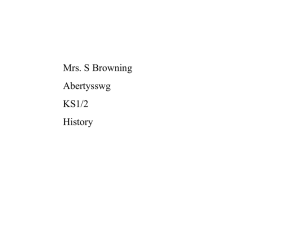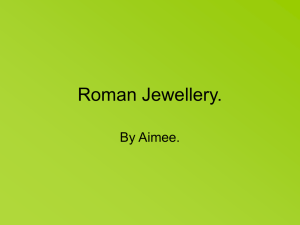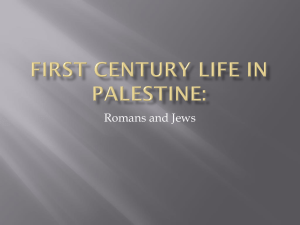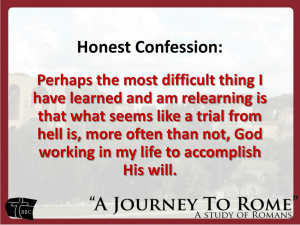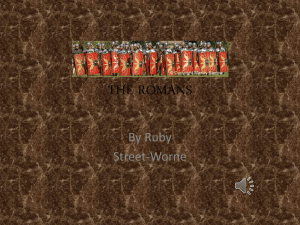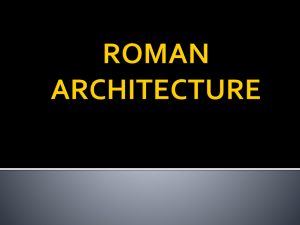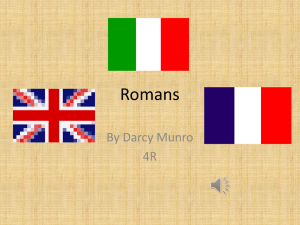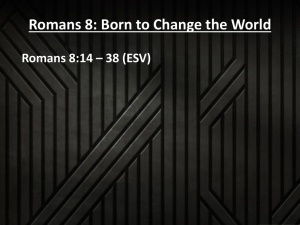Images and explanations - EAL Nexus
advertisement
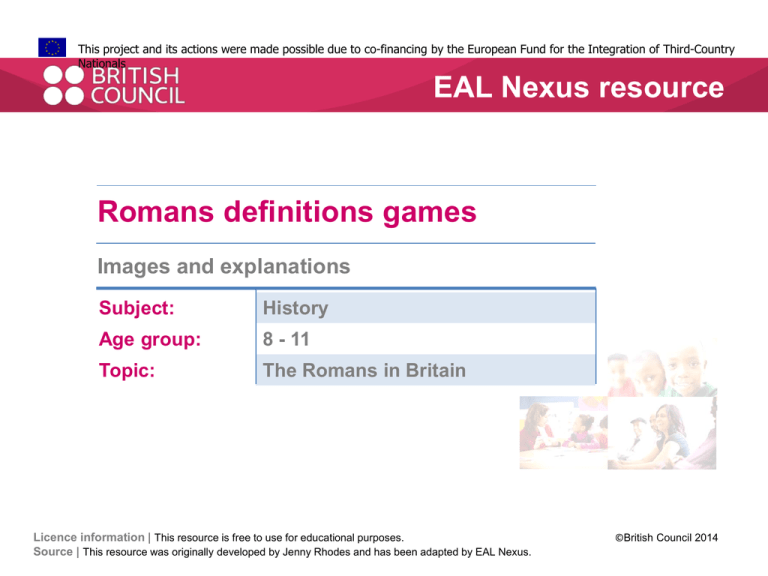
This project and its actions were made possible due to co-financing by the European Fund for the Integration of Third-Country Nationals EAL Nexus resource Romans definitions games Images and explanations Subject: History Age group: 8 - 11 Topic: The Romans in Britain Licence information | This resource is free to use for educational purposes. Source | This resource was originally developed by Jenny Rhodes and has been adapted by EAL Nexus. ©British Council 2014 The Romans in Britain the months in our calendar a way of heating new and different food to eat our houses mosaic pictures roads writing and a number system baths and washing a way of carrying water bricks The Romans in Britain toilets coins pavements glass literature and poetry jewellery pet cats games like hopscotch surgery and medicine The months in our calendar The Romans originally had ten months in their calendar. Some were named after their Gods (Mars, God of War), and others after numbers (September, 7th month of the year). Later two more months were added and named after Emperors Julius and Augustus January Janus, god of doors This months opens the year February februare = to purify Roman month of purification March Mars, god of war Start of soldiers’ year (no fighting in winter) April aperire = to open Plants and trees open their leaves May Maia, goddess of growth Plants growing fast June Juno, queen of Goddess of weddings the gods © British Council 2014 July August Julius Caesar Augustus Named after an Emperor Named after an Emperor September septem = 7 Was the 7th month of the Roman year October octo = 8 Was the 8th month November novem = 9 Was the 9th month December decem = 10 Was the 10th month A way of heating our houses Rich Romans liked to be warm, so they invented the ‘hypocaust’ Their houses had floors laid on piles of bricks with an empty space under Hot air from fires passed around this empty space Slaves kept the fires going New and different foods When the Romans came to Britain, they brought new foods: Meat: rabbit, chicken, dormice and pheasant Vegetables: onions, garlic, leeks and peas Fruit: apples, grapes and cherries Herbs: mint, basil and rosemary Nuts: walnuts and sweet chestnuts Drinks: wine Mosaics Roman buildings often had floors with mosaics in They were pictures made with thousands of tiny stones called tesserae They had scenes of everyday life or from stories Roman roads Britain had no proper roads before the Romans Roman soldiers built good roads They were made of stones and they were often very straight People used to travel on them in a horse and cart Aqueducts Romans built aqueducts to carry water from one place to another They needed fresh water for drinking, watering crops and for public baths Aqueducts were long stone channels which carried water from hills to towns Some aqueducts had different levels: for walking, chariots and water pipes Writing and numbers Writing spread around Britain after the Roman Conquest Roman writing has been found on tombs, mosaics, coins and walls They also wrote on wax tablets for daily use The Romans introduced a number system which was used for some time We do not use it now as it has letters which makes calculation difficult, but you can still see it on some clocks Roman baths and washing The Romans built many public bath-houses People went to them to exercise, wash, relax and socialise The public had to pay to use them They believed the waters from underground springs could cure many illnesses Bricks for building The Romans introduced building with bricks to Britain The legions (soldiers) made fired clay bricks They were made of clay and sand, shaped into a long, flat block shape First they were dried in the sun and then baked in a hot oven called a kiln Toilets The Romans started using sitting toilets with running water The soldiers sat together on a bench with holes over a big trench. Water ran in a ditch at their feet to flush waste away. Romans did not have toilet paper but used a sponge on a stick Coins The Romans used coins made of gold, silver and copper They showed pictures of emperors, owls, horses and even elephants They had letters and numbers on to show their value Pavements The Romans built pavements with large stone slabs laid on layers of sand, gravel and rock They were useful for soldiers to march on, so they didn't sink into the mud Glass Roman glass-makers could make blue, brown, green and clear glass Cups and vases often had pictures and patterns on Roman glass found in Britain is usually dug up from burial sites Literature and poetry Many stories, poems and plays have survived from Roman times One very famous poet was Virgil Here is the first page of Virgil’s Eclogues, a poem written in Latin about his farm Jewellery The Romans made beautiful jewellery in gold This bracelet was a gift for someone called Juliane, and has a good luck message inscribed into it: VTERE FELIX DOMINA IVLIANE, which means ‘You be happy Juliane’ Cats The Romans brought cats to Britain to control the mouse population It is likely they kept them as pets too. Games Indoor games were popular and the Romans played board games with counters and dice Outdoors, games like hopscotch were invented as training for Roman soldiers to become faster and stronger. They ran along a huge hopscotch pitch wearing heavy armour Later, children made a smaller game and scored points. Roman medicine and surgery Roman doctors carried out first aid and simple external surgery on injured soldiers They also used herbal medicine to cure common illnesses calendar months hypocaust cherries apple rabbit chicken mosaic roads aqueduct writing numbers baths bricks villa toilets coins pavements glass literature poetry jewellery cats games surgery medicine Speaking frame The Romans made these for … The Romans used these for… The Romans invented these because… The Romans built … The Romans created…
